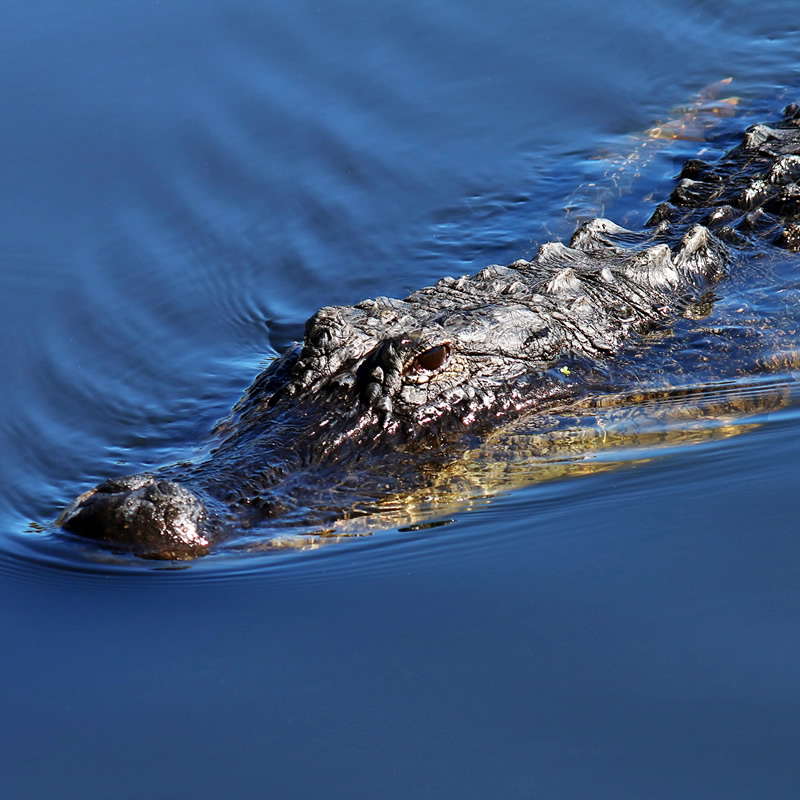
Classification
| Kingdom | Animalia |
| Phylum | Chordata |
| Class | Reptilia |
| Order | Crocodilia |
| Family | Alligatoridae |
| Genus | Alligator |
| Species | mississippiensis |
IUCN Redlist Status

Location and Habitat
American alligators are located in southeastern United States. They can be found in states including North and South Carolina, Georgia, Florida, Alabama, Mississippi, Louisiana, Texas and even Arkansas. Their habitat includes freshwater streams and rivers, swamps, lakes and marshes.
Diet
Alligators are carnivorous and feed on a variety of other animals. These animals can include fish, turtles, birds, frogs and small mammals such as squirrels or deer. Unlike crocodiles, they are generally afraid of people and will seldom attack them. However, if a person comes near an alligator nest, a female may attack in defense of the nest. Also, due to increasing human interaction with alligators, they are becoming less timid. For this reason, it is very important to never feed them in the wild and to always keep a safe distance if one is spotted.
Size
Adults are generally larger than females, and grow to approximately 13 - 14 feet from nose to tip of the tail. Females grow to be 9 - 10 feet in length. Males generally weigh between 400 - 600 pounds but can weigh as much as 1000 pounds.
Description
American alligators are different from crocodiles in that they have broad noses whereas crocodiles have pointed noses. They can sometimes be difficult to tell apart when they are not side by side for comparison.
They have thick, dark, greyish-green scales on their sides and back and have bony plates that line their back called "osteoderms". Their skin is perfect camouflage for the murky water that they are often found in.
They also have long, muscular tails which are very powerful and help them to move quickly through the water. Their eyes and nostrils are on top of their heads. This allows them to submerge their entire body under water while only their eyes and nostrils remain above water.
One of the most noticeable features of alligators is their teeth. They have approximately 75 teeth in their mouth at a given time, but will replace 2,000 or more teeth in a lifetime as the teeth become worn down.
Like other reptiles, they are cold-blooded. This means that when the temperature outside drops, their internal body temperature drops, causing them to become sluggish. Once the outside temperature drops low enough, alligators will enter hibernation. During hibernation they will not eat and will seldom move.
Special Adaptations
Alligators have semi-transparent membranes which cover their eyes when submerging under water. They act as another eyelid and assist them in seeing in the water.
They are also capable of submerging underwater for several hours. When submerged, an alligator's heart rate will slow and blood will be directed to critical areas.
Reproduction
Mating between female and male alligators begins at about 10 - 12 years of age. Their mating season generally begins in spring. To attract females, males will make loud groans or roars. Once a female and male have mated, the female will build a nest and lay eggs in the nest. The female will remain with the nest and incubate the eggs until the young alligators hatch. The eggs will take approximately 2 months to hatch.
Other Facts
At one time American alligators were nearly extinct. They were hunted for their skin and meat. In 1970, they became protected by law and have since made a near full recovery.
